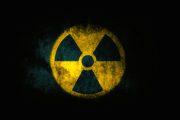Welcome back to Breathe Quality. The reason you are here is because you need an answer to Do air purifiers use a lot of energy? How much electricity does an air purifier use in general?
Although we know the benefits of running an air purifier 24/7 for our indoor air quality, it is our highest priority to know whether this air purifier consumes too much energy or not. No one has ever been happy to see a high electricity bill. I am not. You aren’t, either.
One of our most FAQs is “Do air purifiers use a lot of energy?” Here are a few things you have to keep in mind:
- How many watts does your air purifier use?
- How many fan speeds does it have?
- How long to use an air purifier?
Note: If you need answers to common questions about air purifiers, please read our air purifier FAQs.
Related posts
How many watts does your air purifier use?
The first thing you need to know to check if your air purifier (or basically any electric device) uses a lot of energy or not is to read its usage (commonly in watts). On an electricity bill, one unit equals one kW (1000 watts) per hour. More clearly, if your electric devices’ powers are equal to 1 kW and you run them simultaneously for a whole hour, your electricity bill increases by one unit.
With the typical power of an air purifier of about 50 watts, you could run it continuously for 20 hours to increase one unit. Compare the general power of a light bulb of 60 watts and a computer of 365 watts.
Your air purifiers are much more energy efficient than most of your popular electric devices.
As you can see, using an air purifier isn’t going to impact your electricity bill tremendously. We are happy to give you a few examples of how many watts your air purifier uses.
- Rabbit Air MinusA2 – max 48 W.
- Levoit LV-H132 – max 28 W.
- Honeywell HPA300 – around 130 W.
- Winix WAC9500 – max 15 W.
- Coway AP-1512HH – around 15W.
All of these air purifiers are included in our list of the best air purifiers.
If this is one of your top concerns, you should check for air purifiers with an Energy Star rating before purchasing. These air purifiers are the most energy-saving devices for your home.
How many fan speeds does it have?
The second thing you need to know is how many fan speeds your air purifier has. An air purifier usually has at least two fan speed settings. At the lowest setting, your air purifier consumes the least energy, typically around half that of the highest settings.
Now, let’s check the list of air purifiers.
- Rabbit Air MinusA2 – 5 fan speeds.
- Levoit LV-H132 – 3 fan speeds.
- Honeywell HPA300 – 5 fan speeds.
- Winix WAC9500 – 5 fan speeds.
- Coway AP-1512HH – 3 fan speeds.
How much electricity does an air purifier use?
To calculate the electricity usage of an air purifier, you must multiply the electricity unit cost by the air purifier’s power (watts), then multiply by the actual usage time (hours). In general, an air purifier with more power will use more electricity.
The electricity usage ($) = Electricity unit cost ($) * Your air purifier’s power (kW) * your using time (hours).
If your unit cost is 12 cents and you run your air purifiers for a constant 8 hours per day, then:
- Rabbit Air MinusA2 – $17 per year.
- Levoit LV-H132 – $10 per year.
- Honeywell HPA300 – $46 per year.
- Winix WAC9500 – $5 per year.
- Coway AP-1512HH – $5 per year.
List of the best air purifiers
- 1, Best Air Purifier (Air Purifier Ranking List)
- 2, Best Air Purifiers for Allergies
- 3, Best Air Purifiers for Bedroom
- 4, Best Air Purifiers for Baby
- 5, Best Air Purifiers for Smoke
- 6, Best Air Purifiers for Dust
- 7, Best Air Purifiers for Mold
- 8, Best Large Room Air Purifiers
- 9, Best Air Purifiers for Pets
- 10, Best Air Purifiers for Office
Do air purifiers use a lot of energy?
Air purifiers do not use much energy. Most of the home air purifiers that you’re using consume as much energy as a light bulb, while bigger industrial air purifiers may need more. An air purifier doesn’t need to run at maximum speed to clean the air, thus decreasing the power consumption far better.
In Breathe Quality, we show how much it costs to use an air purifier for at least 8 hours per day. However, it is highly recommended to run an air purifier all the time, especially when you spend your time mostly at home.
Rating Breathe Quality
-
Average ratings for this post



